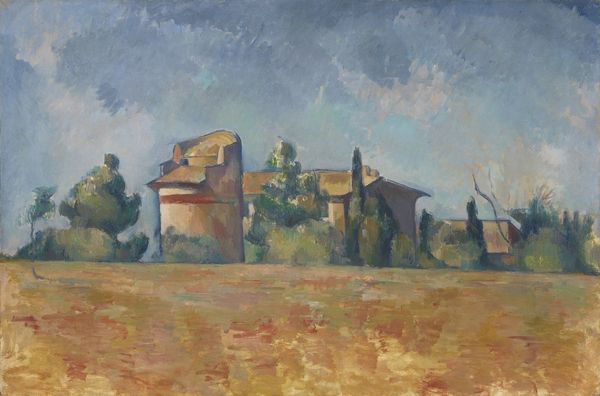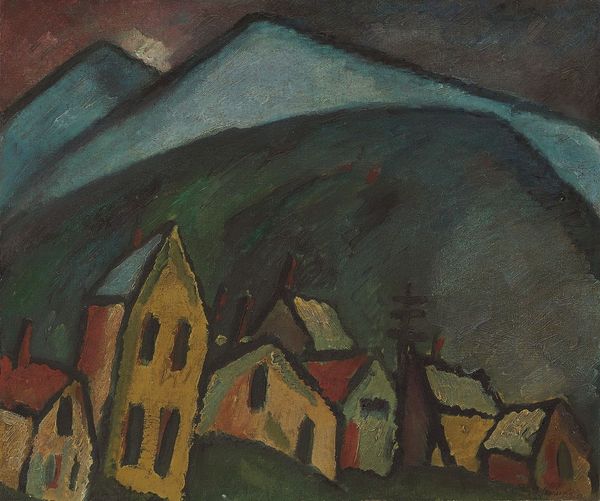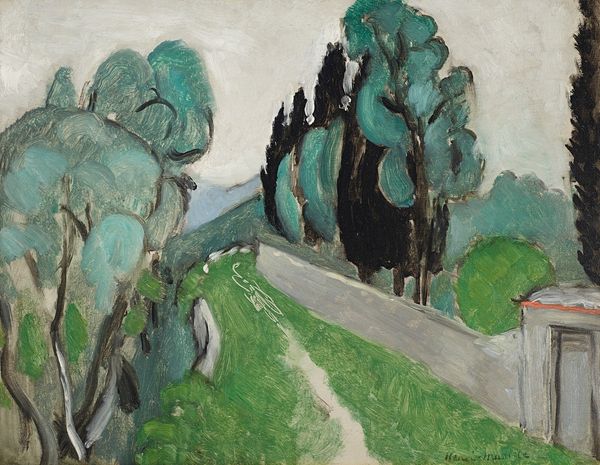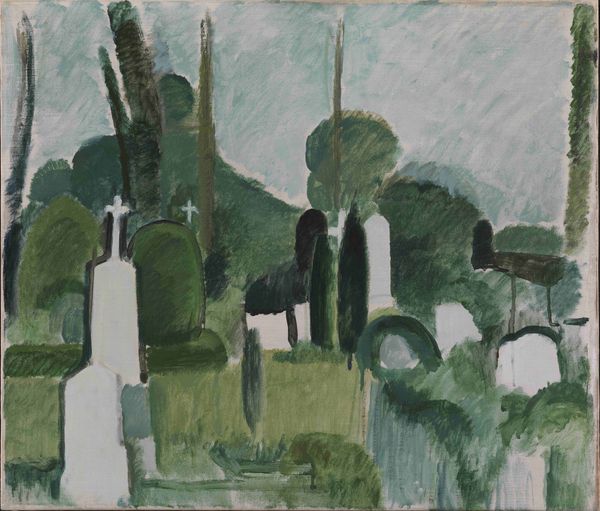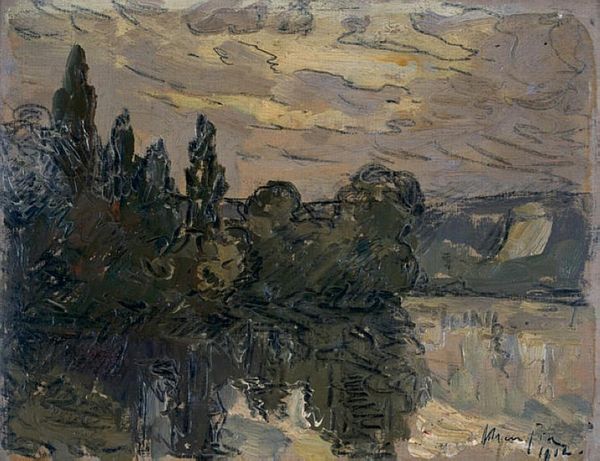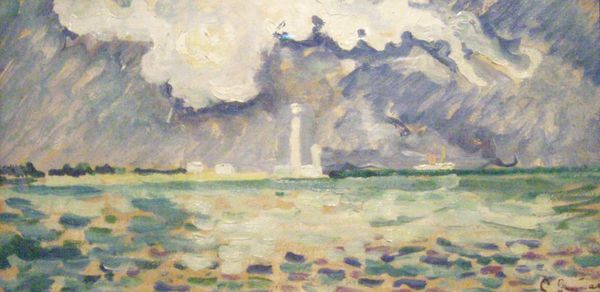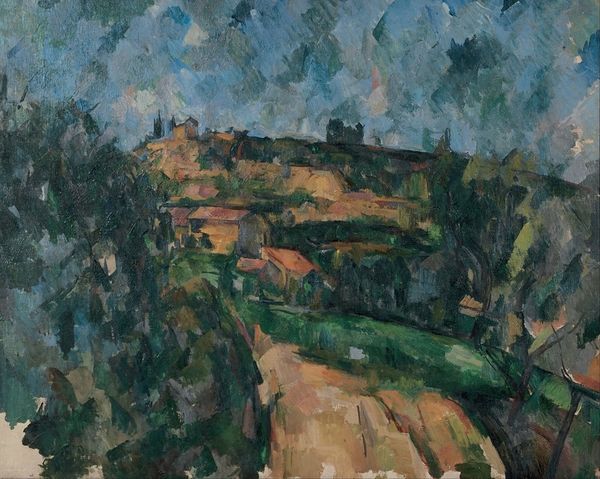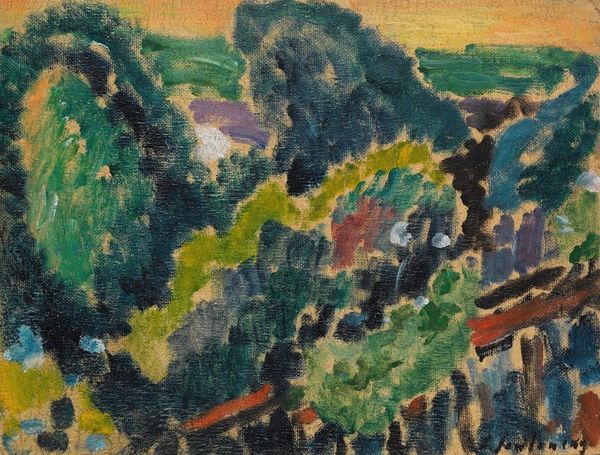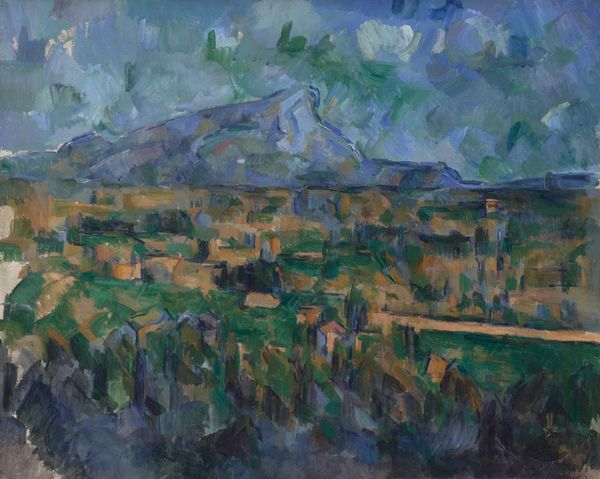
Landscape 1911
0:00
0:00
konstantinosparthenis
National Art Gallery (Alexandros Soutzos Museum), Athens, Greece
Dimensions: 345 x 27.3 cm
Copyright: Public domain US
Editor: This is "Landscape" by Konstantinos Parthenis, created in 1911 using oil paint. It feels very serene, almost like a memory. What do you see in this piece, particularly concerning its materials and the way it was made? Curator: I'm immediately drawn to how Parthenis handles the oil paint. Notice the distinct separation of forms and how that intersects with Impressionistic brushwork, and how it seems to hover just at the edge of abstraction, suggesting the industrial transformation of early 20th-century landscapes. Does the layering and visible brushstrokes suggest anything to you about the artist’s process, or perhaps the rapid societal changes occurring at that time? Editor: It does feel like a world being built, layer by layer, like societal and industrial progress maybe. But how do materials inform that sense of "progress" you mention? Curator: Consider the availability of oil paints in tubes at this time, a product of industrial manufacturing, and its influence on painting en plein air. The modern artist could capture fleeting moments directly from observation. Parthenis presents a landscape reshaped not only by nature, but also by industrial intervention -- seen through that almost diagrammatic arrangement of its components -- as evidenced by that structure on the left...possibly electric pole...? Editor: Ah, the geometric shapes alongside the soft brushstrokes, sort of battling it out on the canvas. Does that make sense? Almost like high art and industrial craft are co-existing. Curator: Precisely! Parthenis acknowledges the changing landscape while also interrogating what constitutes “high art” through its interaction with “low” materials and “industrialized” landscape, which is what elevates it beyond a simple depiction of nature. The landscape itself is becoming a manufactured product, captured with manufactured tools. Editor: That makes me see the painting completely differently! I appreciate how the means of production shaped both the artwork’s materiality and its social context. It's more than just a pretty picture. Curator: Indeed. Examining art through the lens of materials and processes opens up exciting avenues for interpretation, challenging traditional aesthetic boundaries and allowing us to reflect critically on the social conditions of artistic production.
Comments
No comments
Be the first to comment and join the conversation on the ultimate creative platform.
